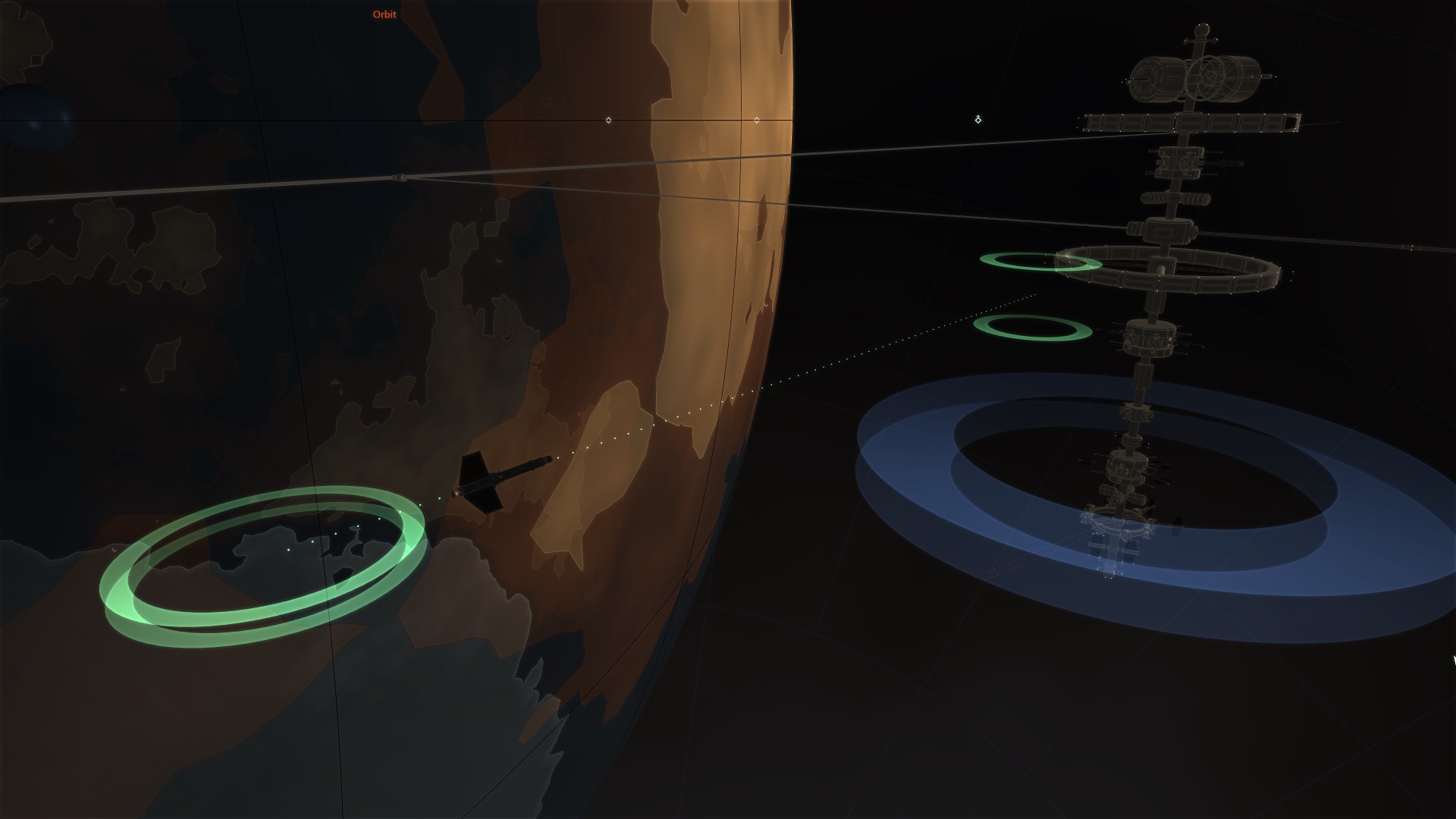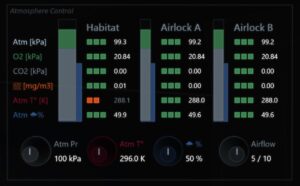The current objective is still to add NPC traffic into the simulation. However it seemed more effective to define flying rules first, and thus that initial implementation of the Orbital Traffic Control system.
The current state is still preliminary since OTC will evolve as more features get added. From simply managing flights and detect regulations infringements it will have to coordinate rescue operations, request help to investigate non-cooperative ships etc…
The following video provides an overview of the system and its integration into the player ship’s avionics:
While OTC is currently interacting with the player only it was written for parallel operations with multiple ships and stations. Many fixes and upgrades will probably be needed but at least the fundamentals are already in place. Notably all possibly costly geometrical checks are run on a worker thread.
There are still quite a few features to implement as part of that update, and then the work will focus on the NPC traffic itself.
Thank you for reading ans stay safe!



Why is it that every single devlog you make actual gold? My god, this sim is going to be amazing!
Thanks! *Ahem* the initial OTC build – before three weeks of bug fixing that is – did not feel golden at all! 😊 But that first foray into “decision making agents” was very enlightening, and clearly there is quite some work ahead in that department! 😅